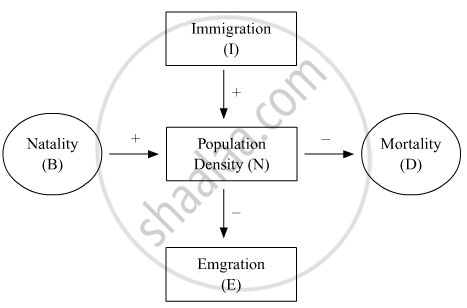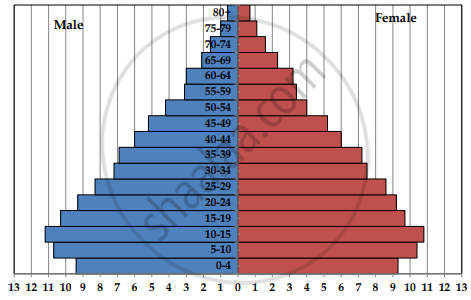Advertisements
Advertisements
प्रश्न
Define population
उत्तर
A population is a group of individuals of the same species capable of interbreeding among themselves found in a geographical area. For example, all the frogs identified as Rana tigrina living in a given pond constitute a population. Similarly, all water hyacinth plants (Eichhornia) growing in that pond form another population. Organisms of the same kind may form several populations inhabiting different geographical areas.
APPEARS IN
संबंधित प्रश्न
Represent diagrammatically three kinds of age-pyramids for human populations.
How does an age pyramid for human population at given point of time helps the policy-makers in planning for future.
Answer the following question.
What is "population" according to you as a biology student?
Answer the following question.
"The size of a population for any species is not a static parameter." Justify the statement with specific reference to fluctuations in the population density of a region in a given period of time.
Study the flow chart given below and complete the equation that follows by identifying 1, 2, 3 and 4.

Nt + 1 = Nt + {(1+ 2) − (3 + 4)}
Nutrient enrichment of water body result.
The phenomenal and rapid increase of population in a short period is called ______.
What parameters are used for tiger census in our country’s national parks and sanctuaries?
Which of the following would necessarily decrease the density of a population in a given habitat?
Which one of the following organisms reproduces sexually only once in its lifetime?
The density of a population in a habitat per unit area is measured in different units. Write the unit of measurement against the following:
Bacteria
The density of a population in a habitat per unit area is measured in different units. Write the unit of measurement against the following:
Deer
Define ‘zero population growth rate’. Draw a age pyramid for the same.
The following diagrams are the age pyramids of different populations. Comment on the status of these populations.

Given below is the Age Pyramid of the population in one of the states in India as per 2011 census. It depicts the male population on the left-hand side, female population on the right-hand side, newborns towards the base and gradually increasing age groups as we move from base to the top, with the oldest population at the top. Study this pyramid and comment upon the appropriateness of the Assertion and the Reason.

Percentage to the total population
Assertion: It is a stable population.
Reason: The pre-reproductive and reproductive individuals are almost in equal numbers and the post-reproductive individuals are relatively fewer.
What would be the best method to measure the total population density of a dense bacterial culture in a petridish and why?

Identify the type of pyramid given above. Write the identifying feature on the basis of which you identified it.
The number of lily plants in a pond was found to be 50. After one year, the number. increased to 65. Calculate the natality of lily plants.
